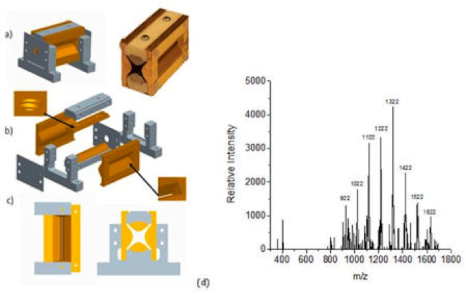Miniature ion traps using digital light processing (DLP)
The ion trap is an extraordinary device that functions as an 'electronic test tube' for capture of charged atoms or molecules (ions). By application of the correct electromagnetic fields, ions can be stored, manipulated and subsequently ejected for analysis.
Professor S Taylor
This allows the atomic or molecular weight of the ions to be established and the substance (usually unknown) can be identified. Used in this way the ion trap is a mass sensor and gives both qualitative (what the substance is) and quantitative (how much is there) information. Ion traps are used to identify explosives, drugs, unknown chemical substances and even small biomolecules. Recently ion traps have been minituarised and taken out of the laboratory for use in harsh or demanding environments, e.g. on board spacecraft, in the oceans and/or on the battlefield.
The research in this Department investigated the fabrication of ion traps using novel manufacturing techniques. Using Digital Light Processing (DLP) ion traps may be fabricated using dynamic masking rapidly, with low weight, at low cost and at the microscale. Electrodes are formed by thermal evaporation of gold to form smooth conducting surfaces. In collaboration with researchers in the Aston laboratories, Purdue University (http://aston.chem.purdue.edu), a linear ion trap (LIT) with hyperbolic shape electrodes has been designed, simulated, fabricated and tested (see figure 1).
The mass range of the trap was found to extend from 100 up to 1900 Da. This is unusual for the level of voltage excitation used (2.2kV) and is a consequence of the hyperbolic shape of the electrodes, which provide an electric field closer to the ideal than other reported traps which use circular or non hyperbolic electrode shapes. The LIT was mounted in a hand portable vacuum system and used for the identification of a range of substances including rhodamine B, cocaine, methamphetamine and ultramark.
Figure 1. (a) CAD model and actual prototype of the LIT, (b) exploded assembly of LIT showing threaded hole and ion entrance/extract details, (c) LIT electrode profile, (d) mass spectra obtained for ultramark dye.
